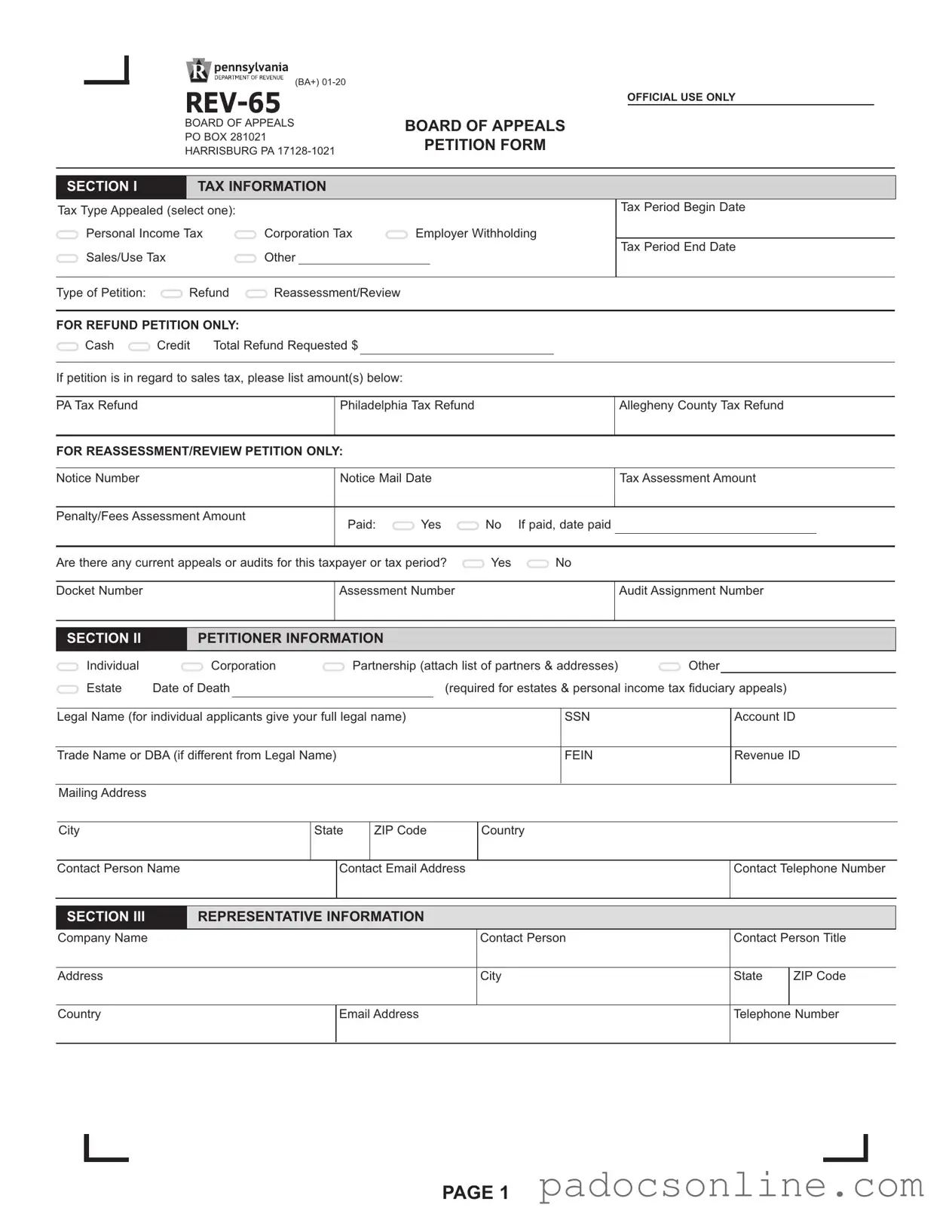Filling out the Pennsylvania Board of Appeals form can be a straightforward process, but many individuals and businesses make common mistakes that can lead to delays or even dismissals of their appeals. Understanding these pitfalls can save time and ensure that your petition is properly considered.
One frequent error is neglecting to provide the correct tax period. It's crucial to clearly identify the start and end dates of the tax period being appealed. Incomplete or incorrect dates can lead to confusion and may result in the rejection of the petition. Always double-check this information before submission.
Another common mistake is failing to specify the type of petition accurately. The form allows for several types, such as refund or reassessment/review. Marking more than one option can cause complications, as the Board may not know how to process the request. It’s essential to select only one type to avoid unnecessary delays.
Many applicants also overlook the importance of including the notice number and the date it was mailed. These details are vital for the Board to locate your case and verify the information you are appealing. Without this information, your appeal may not be processed efficiently.
In addition, some individuals forget to sign the petition. All petitions must be signed by either the petitioner or an authorized representative. If an authorized representative signs, a written authorization must accompany the petition. Neglecting to sign can lead to automatic dismissal.
Another mistake involves not providing adequate documentation. Attachments, such as a copy of the notice being appealed, are essential. Failing to include these documents can result in the Board not having all the necessary information to make a decision, which may stall your appeal.
Some applicants also make the error of not clearly itemizing the issues involved in their appeal. A vague or overly general explanation can leave the Board without a clear understanding of your situation. It’s beneficial to be as specific as possible about the reasons for your appeal to facilitate a thorough review.
Moreover, there is often confusion regarding the method of communication. Applicants should specify whether they wish to receive correspondence via U.S. mail or email. Choosing the wrong option can lead to missed communications, which may impact the appeal process.
Lastly, many people fail to adhere to the submission deadlines. The Board of Appeals requires that certain documents be submitted within specific timeframes. For example, any evidence in support of the petition must be submitted no later than 60 days from the filing date. Missing these deadlines can jeopardize the appeal.
By being mindful of these common mistakes, individuals can enhance their chances of a successful appeal. Careful attention to detail, thorough documentation, and adherence to guidelines will pave the way for a smoother process.
